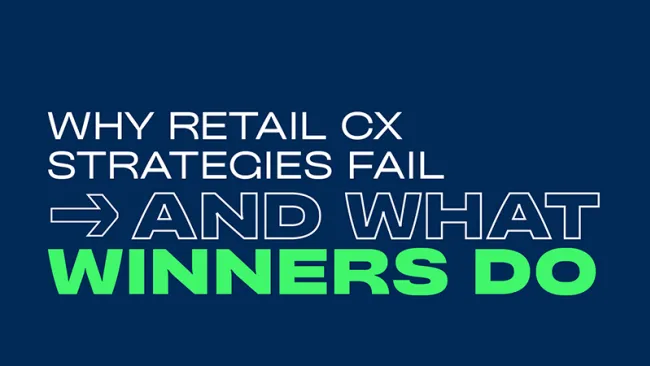A major component of the retail customer journey is returns. Customers invariably decide to return products that aren’t the right size, the right color, the right type, or the item simply doesn’t suit their needs. Retailers intent on providing great customer experiences and strengthening loyalty need to take steps to make the return process as frictionless as possible.
However, as it stands, it’s often quite difficult for a customer to return a product without a hassle—at least from the customer’s standpoint.
Customers have come to expect hassle-free return policies as retailers such as Kohl’s and Zappos have paved the way for customers to return items easily. Kohl’s offers a “no questions asked, hassle-free” return policy on all purchases. Meanwhile, Zappos provides free return shipping on all products up to 365 days of the purchase date so long as the products are in the same condition they were received in and returned in the original packaging. And some retailers such as Soft Surroundings offer both omnichannel sales and omnichannel returns. Since the women’s apparel and home décor retailer offers some products through each of its channels that aren’t available in all—e-commerce, stores, and catalogs—it also allows returns through these channels as well.
Providing customer-centric return policies is paying off for these and comparable retailers since easy returns impact purchasing behavior. A UPS-sponsored June 2014 study titled “UPS Pulse of the Online Shopper” reveals that a retailer’s return policies influence shopping behaviors. According to the study, 66 percent of shoppers will review a retailer’s return policy before purchasing and only 58 percent are satisfied with the ease of making online returns or exchanges.
Of course, merchandise returns also represent a significant cost for retailers. According to the National Retail Federation, merchandise returns cost retailers an estimated $270 billion annually. Yet it makes good business sense for retailers to offer hassle-free returns. According to a joint study by Washington and Lee University’s William School of Commerce and the University of Virginia, “Return Shipping Policies on Online Retailers: Normative Assumptions and the Long-Term Consequences of Fee and Free Returns,” when consumers receive free shipping on returned items, they increase their purchases by 58 percent to 357 percent over the next two years. Subsequently, consumers who had to pay for return shipping cut their spending between 74 percent to 100 percent.
Here are three considerations for retailers to make returns as painless as possible:
1. Walk in the customer’s shoes
Consider the steps a customer must take to return an item to a store. She must either drive or take mass transit to reach a store, carry the item to the store, locate the customer service counter, and hope that she doesn’t encounter any problems exchanging the item. If the return is denied, either due to a missing receipt, excess damage to the product, or for some other reason, the customer’s time and effort has been wasted, resulting in frustration and a negative experience.
Understanding the steps a customer has to go through to make a return can enable retailers to make the return experience as painless as possible. A good starting point is by developing a customer journey map to plot out the different actions a customer must take to return an item online or to a physical outlet. Processes can then be shaped to ensure that customer’s return experience is as frictionless as possible.
2. Develop customer-centric return policies
Developing customer-centric return policies is an effective way to demonstrate to first-time buyers that your organization is easy to do business with. It’s also a great way to keep customers loyal and to increase incremental revenue through word-of-mouth recommendations. Providing customers with easy ways to return merchandise, such as a pre-paid return label, choice of carrier, or the ability to return a product without a receipt, removes friction from the customer experience by reducing the hassle of making a return.
3. Enable omnichannel returns
Customers purchase merchandise using a variety of channels (website, mobile, stores, and catalogs). As such, they should be entitled to return merchandise through the channel of their choice without penalty. Still, customers don’t want to deal with the complexities of buying a product from one channel and electing to return it to another. They simply want the process to be made easy. How the product is then sorted and redistributed to specific channels is something that should occur behind the scenes and transparent to the customer.
Providing customers with simple return policies is a great way of demonstrating that your company is easy to do business with. Effortless returns should be an important component of any retailer’s value proposition.
Also, check out the most recent issue of our e-newsletter.
Breaking Up Is Hard to Do: Three Ways to Make Returns Painless for the Customer and the Company
















